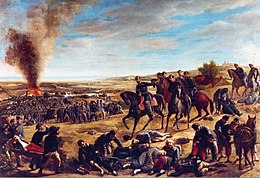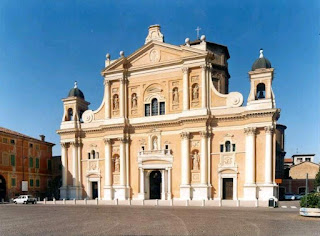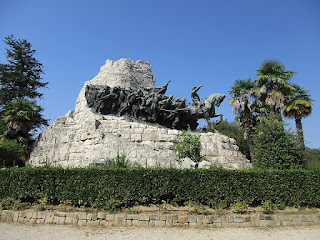Benedetto Croce – philosopher and historian
Prolific writer opposed the Fascists and supported democracy
Benedetto Croce, one of the most important figures in Italian life and culture in the first half of the 20th century, was born on this day in 1866 in Pescasseroli in the region of Abruzzo. Croce was an idealist philosopher, historian and erudite literary scholar whose approach to literature influenced future generations of writers and literary critics. He was nominated for the Nobel Prize in Literature 16 times. He became a Senator in 1910 and was Minister for Education from 1920 to 1921 in the last pre-Fascist government of the so-called Giolitti era. He is also remembered for his major contribution to the rebirth of Italian democracy after World War II. Croce was born into a wealthy family and raised in a strict Catholic environment. However, from the age of 16 he gave up Catholicism and developed a personal philosophy of spiritual life. In 1883, while he was still a teenager, he was on holiday with his family on the island of Ischia when an earthquake struck Casamicciola and destroyed the house they were staying in. His mother, father and sister were all killed, but although he was buried for a long time, he managed to survive. Read more…
_______________________________________
Enea Salmeggia – artist
Painter was dubbed the Raphael of Bergamo
Prolific painter Enea Salmeggia, who was active during the late Renaissance period and left a rich legacy of art in northern Italy, died on this day in 1626 in Bergamo in the region of Lombardy. Salmeggia, also known as Il Talpino, or Salmezza, went to Rome as a young man, where he studied the works of Raphael. His style has often been likened to that of Raphael and he has even been called the Bergamo Raphael by some art lovers. A drawing formerly attributed to Raphael, now in the Ashmolean Museum in Oxford, of two figures seated with some architectural studies, has subsequently been ascribed to Enea Salmeggia. The artist was born at Salmezza, a frazione of Nembro, a comune - municipality - in the province of Bergamo, between 1565 and 1570. It is known that he grew up in Borgo San Leonardo in Bergamo, where his father, Antonio, was a tailor. He learnt the art of painting from other Bergamo painters and is also believed to have studied under the Bergamo artist Simone Peterzano in Milan. Caravaggio was one of Peterzano’s most famous pupils and it has been suggested that Salmeggia could have been studying with Peterzano at the same time as Caravaggio. Read more…
______________________________________
Carlo Goldoni – playwright
Greatest Venetian dramatist whose work still entertains audiences today
Carlo Goldoni, the author of The Servant of Two Masters, one of Italy’s most famous and best-loved plays, was born on this day in 1707 in Venice. Goldoni became a prolific dramatist who reinvigorated the commedia dell’arte dramatic form by replacing its masked, stock figures with more realistic characters. He produced tightly constructed plots with a new spirit of spontaneity and is considered the founder of Italian realistic comedy. The son of a physician, Goldoni read comedies from his father’s library when he was young and ran away from his school at Rimini with a company of strolling players when he was just 14. Later, while studying at the papal college in Pavia, Goldoni read comedies by Plautus, Terence and Aristophanes and learnt French so he could read plays by Molière. He was eventually expelled for writing a satire about the ladies of Pavia and was sent to study law. Although he practised law in Venice and Pisa and held diplomatic appointments, his real passion was writing plays for the theatres in Venice. In 1748 he began writing for the Teatro Sant’Angelo company and dispensed with masked characters altogether for his play, La Pamela, a serious drama based on Samuel Richardson’s novel. Read more…
_____________________________________
Alberto Sordi - actor
Comic genius who appeared in 190 films
Alberto Sordi, remembered by lovers of Italian cinema as one of its most outstanding comedy actors, died on this day in 2003 in Rome, the city of his birth. He was 82 and had suffered a heart attack. Italy reacted with an outpouring of grief and the decision was taken for his body to lie in state at Rome's town hall, the Campidoglio. Streams of his fans took the opportunity to file past his coffin and when his funeral took place at the Basilica of San Giovanni in Laterano it was estimated that the crowds outside the church and in nearby streets numbered one million people. Only the funeral of Pope John Paul II, who died two years later, is thought to have attracted a bigger crowd. Sordi was the Italian voice of Oliver Hardy in the early days of his career, when he worked on the dubbing of the Laurel and Hardy movies. He made the first of his 190 films in 1937 but it was not until the 1950s that he found international fame. He appeared in two movies directed by Federico Fellini - The White Sheik and I vitelloni. In the latter, he played an oafish layabout, something of a simpleton but an effeminate and vulnerable character to whom audiences responded with warmth and affection due to Sordi's interpretation. Read more…
_______________________________________
Enrico Caruso – opera singer
Tenor's voice still regarded as greatest of all time
Operatic tenor Enrico Caruso was born on this day in 1873 in Naples. Believed by many opera experts to be the greatest tenor of all time, Caruso had a brilliant 25-year singing career, appearing at many of the major opera houses in Europe and America. He made more than 200 recordings of his beautiful voice, some made as early as 1902. Caruso was born in Via San Giovanello agli Ottocalli in Naples and baptised the next day in the nearby church of San Giovanni e Paolo. At the age of 11 he was apprenticed to a mechanical engineer and also worked alongside his father in a factory. At the same time he was singing in his church choir and was told his voice showed enough promise for him to consider becoming a professional singer. Until she died in 1888, he was encouraged by his mother. To earn money, he started to work as a street singer in Naples, progressing to singing Neapolitan songs as entertainment in cafes. Having decided to become an opera singer, Caruso took singing lessons, keeping up with them even during his compulsory military service. He made his stage debut in 1895 at the Teatro Nuovo in Naples. Read more...
________________________________________
The father of modern pathological anatomy
Anatomist Giovanni Battista Morgagni, who is credited with turning pathology into a science, was born on this day in 1682 in Forlì in Emilia-Romagna. Morgagni was professor of anatomy at the University of Padua for 56 years and taught thousands of medical students during his time there. He was sent by his parents to study philosophy and medicine at the University of Bologna when he was 18 and he graduated as a doctor from both faculties. In 1706 he published his work, Adversaria anatomica, which was to be the first volume of a series and helped him become known throughout Europe as an accurate anatomist. He succeeded to the chair of theoretical medicine at the University of Padua in 1712 and was to teach medicine there until his death in 1771. Morgagni was promoted to the chair of anatomy after his first three years in Padua, following in the footsteps of many illustrious scholars. He brought out five more volumes of his Adversaria anatomica during his early years in Padua. In 1761, when he was nearly 80, he brought out the work that was to make pathological anatomy into a science – De Sedibus et causis morborum per anotomem indagatis (Of the seats and cause of diseases investigated through anatomy). Read more…
_______________________________________
Book of the Day: Benedetto Croce and the Birth of the Italian Republic, 1943-1952, by Fabio Rizi
As president of the Italian Liberal Party, Benedetto Croce was one of the most influential intellectuals involved in Italian public affairs after the fall of Mussolini. Placing Croce at the centre of historical events between 1943 and 1952, this book details his participation in Italy’s political life, and his major contributions to the rebirth of Italian democracy. Drawing on a great amount of primary material, including Croce’s political speeches, correspondences, diaries, and official documents from post-war Italy, Benedetto Croce and the Birth of the Italian Republic illuminates the dynamic and progressive nature of Croce’s liberalism and the shortcomings of the old Liberal leaders. Providing a year-by-year account of Croce’s initiatives, author Fabio Rizi fills the gap in Croce’s biography, covering aspects of his public life often neglected, misinterpreted, or altogether ignored, and restores his standing among the founding fathers of modern Italy.Fabio Fernando Rizi was born in Italy and received his Ph.D. from York University. He was President of the Dante Society of Toronto for several years, and worked for the Toronto Public Library until his retirement.
.jpg)






.jpg)
.jpg)
.jpg)

.jpg)



.jpg)
.jpg)







